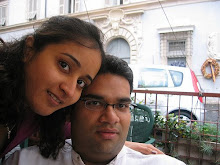Without doubt Nepal is one of the foremost trekking and adventure destinations in the world. So much so that I even heard 1 New Zealander saying that with a bit of infrastructure development Pokhara could be far better that Queenstown in NZ, as a adventure seekers paradise - with walking, mountaineering, Paragliding, Rafters, Kayaking etc etc all within a short distance from the town.
When it comes to treks you are totally spoilt for choice, and you have all the treks that attract real kudos points, such as the famous Everest Base camp or Annapurna circuit. You are also spoilt for choice in the options of how to go about organising your trekking. With all this choice there are some major questions that you have to consider if you are to make the most of trekking, these include:
1) How long you want to trek for? This can depend on your interest level, wider travel constraints and visas. We trekked for 11 days in total, but based on the intensity of our trek we could have gone on for 20 days. We were only trekking 5 hours a day max, and the terrain was pretty easy, therefore we could extend ourselves.
2) Do you want to trek with a guide/porter or a combination? This depends on where you are trekking. Quite honestly in the Annapurna region of Nepal, trekking with a guide/porter is a choice rather than a must. If you are by yourself it is good to have a porter or guide, for safety and company. However I would not say that the trekking in this region is technically challenging enough to need a guide, and with well equipped teahouses everywhere, you would not really need to carry so much equipment that would require you to have a porter.
The routes are really well marked and laid out, so there is a near 0% chance of getting lost. The guide does however give you knowledge that you may not get from other sources, and the language barrier is also no longer an issue.
3) Do you want to do one of the famous routes (which will be busy) or a lesser known route (which may not hold the total wow factor)? We trekked the Jomsom/Muktinath trek. This is essentially 2/5ths of the full Annapurna circuit. Both of these treks, along with a range of others that go through what is called the Annapurna sanctuary, are well known and well trodden. I am not sure that there is too much off the beaten track around this part of Nepal. You could however take on the upper Mustang region, which is closer to Tibet, more rugged and much less popular. This might be a good idea if you want to get away from the tourist crowd too. I must say though, part of the fun that we had on the trek was meeting the wide range of people we did. This would have been less likely if we had trekked an isolated route.
4) How tough you want the trek to be – relaxing trekking makes for a more pleasant experience, but you might have a lessened sense of achievement. To be honest I think this is a personal call. Some people trek hard and fast, in order to achieve something, others trek in order to see the world, and meet people. On the Annapurna circuit you meet both camps. The average circuit takes 16 days, but we met people who were completing this in 12 days and others who planned for 20+ days!! It just depends.
Other treks are physically tough because of altitude. I would suggest taking the altitude issue seriously and don’t trying and going too fast. How people cope at 4000m is not always down to their fitness levels. We were not doing the circuit trek, that goes up to 5000m but we have experienced this in Tibet, and it can be tough.
Once you are clear on these, you can go ahead and source your trek, or even plan an independent solution. I will be honest this is totally down to personal choice, but for some of the well trodden routes such as routes in the Annapurna conservation area, you can do your know thing. All you need is to pack your bag, get your permit, and make sure you have a good map, and guide book. The later are not really to assist if you get lost (seemingly it is tough to stray from the clear path) but rather, more to plot where you have been each night!!
Tours have their benefits; in particular if you are travelling alone, as they bring you together with a group, however we have found that they can be expensive. I think the most important question to ask, is how comfortable are you in being your guide, navigator, Porter and cultural attaché all in one? If you need other experts for these roles then book a tour, or source a guide or porter. We decided to go it alone and although we will have to carry everything will be staying in teahouses and there are reputed to be really great, let’s hope so!!!
For us the whole point of coming to Nepal was to trek, this is a common fact for most of the people who visit, somehow and somewhere in there trip most will ‘trek’. The problem/positive for people is making a choice between the endless number of locations and trekking combinations to choose from. Trekking in Nepal is a real experience and one not to miss. Make sure you look up, around and behind you, so as not to miss the breathtaking scenes and experiences of your trek.



























































